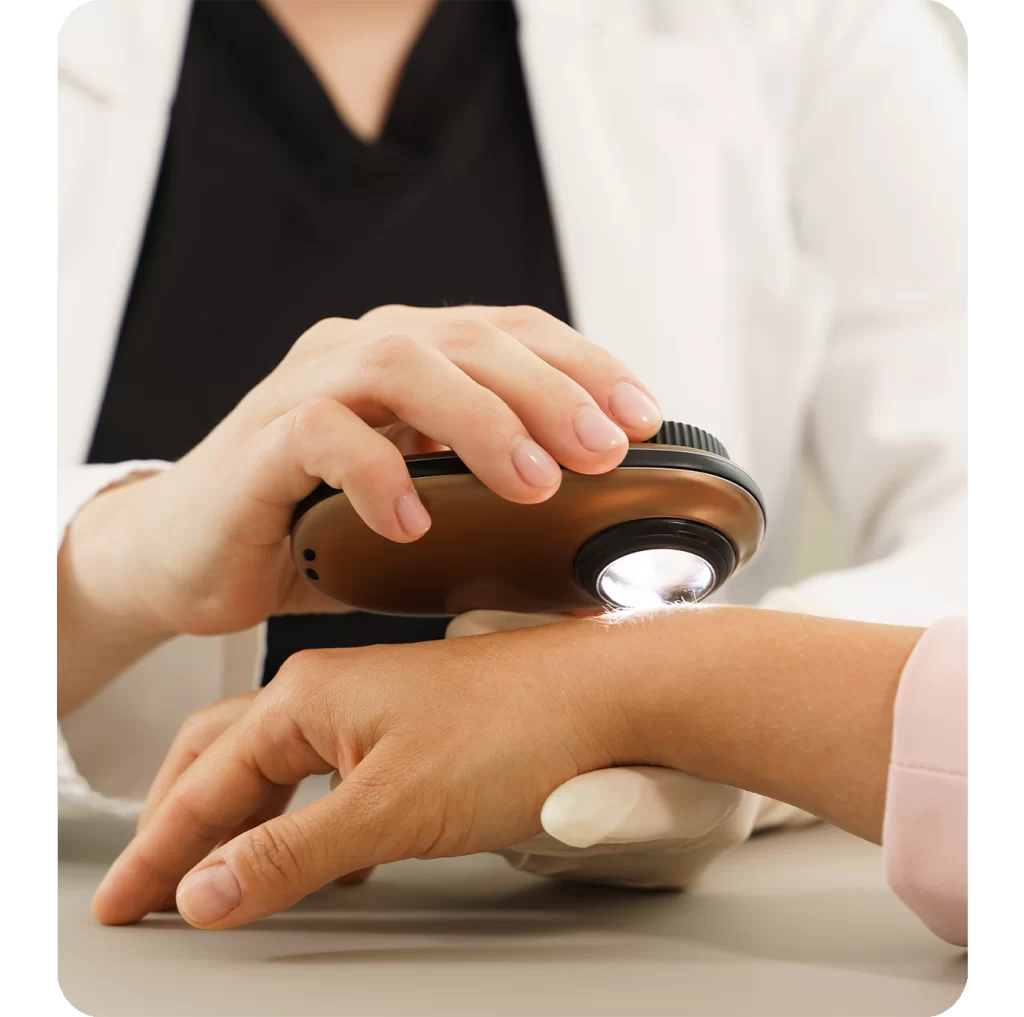
Skin Cancer
Skin cancer is the most common, potentially fatal form of cancer. A majority of skin cancers are curable if caught early. Dr. Michele Moraes stresses the importance of regular self-examination and skin exams. Schedule an appointment at Boca Derm in Boca Raton, Florida, to tend to your health and well-being.
What is skin cancer?
Like all cancers, skin cancer involves the abnormal growth of cells. Abnormal growth of skin cells appear as three different forms that range in severity:
- Basal Cell Carcinoma
- Squamous Cell Carcinoma
- Melanoma
Each has different symptoms and severity that can best be assessed by Dr. Michele Moraes.
What is basal cell carcinoma?
Basal cell carcinoma is the most common form of skin cancer which is usually triggered by sun exposure. A majority of these cases occur on the face and neck, which inevitably receives the most sun exposure.
Basal cells live in the deepest layer of the epidermis and gradually multiply when UVB radiation from the sun damages your body’s natural repair system. While they rarely metastasize, various signs to watch for include:
- Raised pink or white bump with a pearly edge and small blood vessels
- Pigmented bumps that resemble moles with a pearly edge
- A sore that continuously reopens after healing
- A flat, scaly scar with a waxy appearance and blurred edges
With sun exposure being the major trigger, risk factors for basal cell carcinoma include:
- Having fair skin
- Sun exposure
- Age
- Exposure to UV radiation (including tanning beds)
- Therapeutic radiation
Treatment options for a basal cell carcinoma may include:
- Electrodesiccation and curettage (ED&C)
- Surgical excision
- Mohs micrographic surgery
- Prescription creams
- Radiation therapy
Since basal cell carcinoma is relatively common, schedule a skin exam with Dr. Moraes to discuss any concerns or suspicious lesions.
What is squamous cell carcinoma?
Squamous cell carcinoma is the second most common type of skin cancer that forms in the surface of the epidermis. They are characterized by a scaly or crusted appearance with an inflamed base that may be sensitive to the touch.
Squamous cell carcinoma can develop anywhere, but it’s most frequently seen on the scalp, face, ears, and hands. They do share some of the same risk factors as basal cell carcinomas, including fair skin and a history of sun exposure.
Dr. Moraes diagnoses squamous cell carcinoma through a skin biopsy, which will be sent for microscopic evaluation.
What is melanoma?
Melanoma is the most concerning form of skin cancer, and it is due to the abnormal growth of melanocytes (pigment-producing skin cells) in the bottom layer of the epidermis. Melanoma may present as an irregular, dark brown or black spot on the skin or as a change in pre-existing moles. Therefore, it is imperative for patients to conduct self-examinations or have regular follow-ups to detect any suspicious lesions.
Similar to the other types of skin cancers, sun exposure — particularly overexposure in childhood — greatly increases your risk for melanoma. The cause can also be hereditary, so regular protection and surveillance of your skin are necessary for preventing its progression.
Since a majority of skin cancers are curable, schedule a full skin check with Boca Derm to ensure your well-being.
